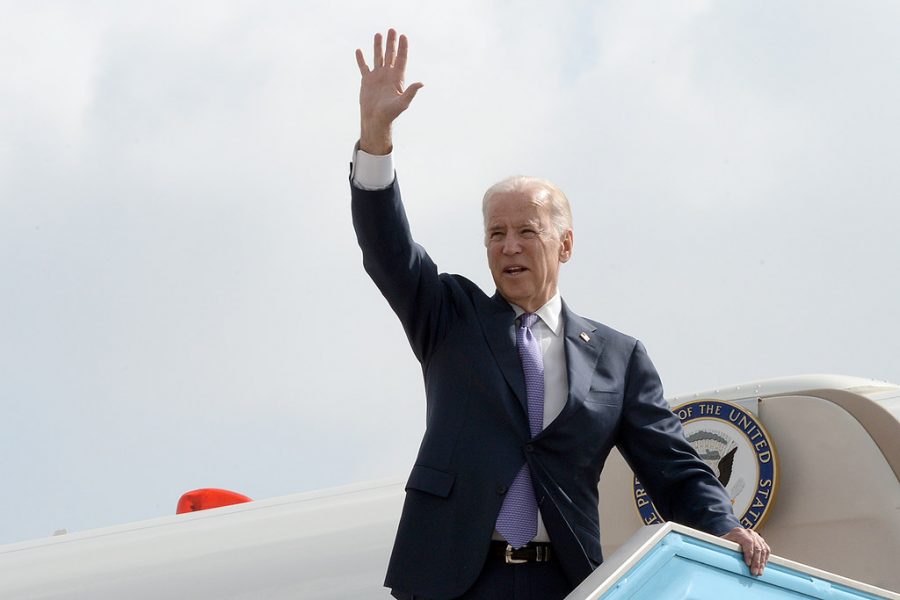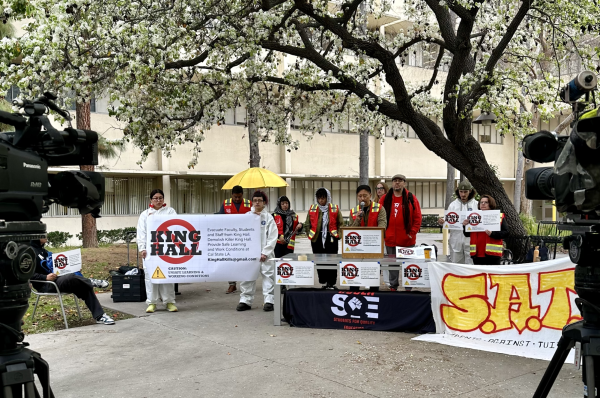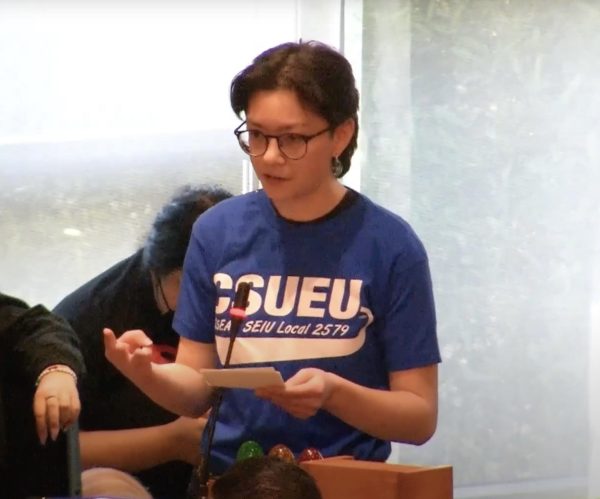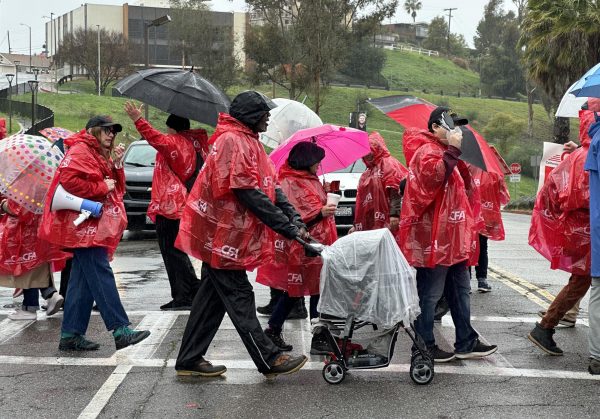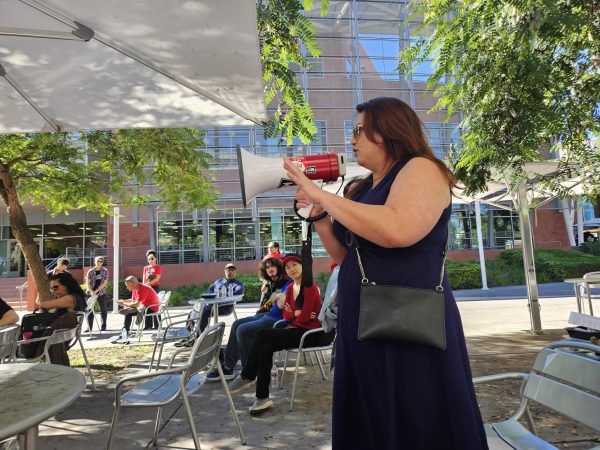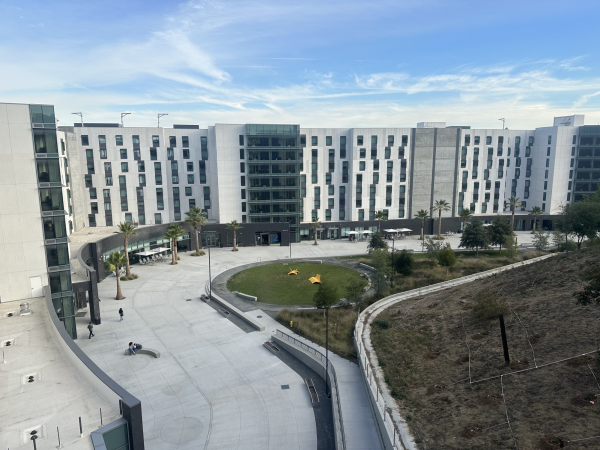Unpacking President Biden’s policy agenda
Joe Biden signed 17 executive orders on his first day of his office as president of the United States. Image from Flickr and Creative Commons 2.0.
Despite weeks of efforts from the Trump administration, Joe Biden has been sworn in as president of the United States. With four years ahead, Raphael Sonenshein, executive director of the Pat Brown Institute at Cal State LA, said he expects significant policy changes under a Biden administration.
“[Trump and Biden] basically disagree on everything. In many ways, Trump’s presidency was devoted in matters large and small to erasing the eight years of Barack Obama and Joe Biden in health care, environment, immigration, among others,” said Sonenshein.
He added, “Since much of what Trump did was by executive action, Biden can unravel a considerable amount of this work by his own executive orders.”
On Joe Biden’s website, a number of plans are outlined such as COVID-19, climate change and immigration.
COVID-19:
Biden’s plan of action is a seven-part plan that consists of:
Improving the system and rate of testing for and tracing of the virus. Expanding the number of drive-thru testing sites, scaling up testing capacity and creating a testing board for efficient distribution of tests are all elements of this first step.
Fixing all issues relating to the quality and distribution of American personal protective equipment (PPE) such as masks.
Providing responsible, evidence-based guidance for how communities should navigate this pandemic, as well as providing financial resources for businesses, schools and families. The exact figures for financial support and relief are not provided in this step.
Planning for “effective, equitable distribution of treatments and vaccines.” This step specifies investing $25 billion into a vaccine manufacturing and distribution plan that would guarantee all Americans can receive the vaccine, cost-free.
This step also stresses that all matters pertaining to the vaccine should not be politicized and scientists should determine the “safety and efficacy” of a vaccine. It also ensures everyone, not exclusively the wealthy, can receive the protection and care they deserve. However, it does not specify how this policy will be enforced.
Protecting “older Americans and others at high risk.” President Biden released plans specifically for older Americans and Americans with disabilities.
Expand and repair defenses to “predict, prevent, and mitigate pandemic threats.” Measures include restoring the White House National Security Council Directorate Health Security and Biodefense; restoring our nation’s relationship with the World Health Organization; re-launching and bolstering PREDICT, the U.S. Agency for International Development’s pathogen-tracking program; and increasing the number of CDC’s deployed “disease detectives,” health professionals that track and research outbreaks.
Implementing a mask mandate that is supported by governors and mayors who understand the gravity of the situation.
Climate Change
Biden presented on his site an extensive and ambitious plan on how the nation should confront climate change. He detailed lists of priorities and actions to take on his first day in office through executive orders as well as what he plans for his first year in office.
Several components in his plan aim to improve infrastructure and move towards clean energy.
Infrastructure: He said this plan will “create millions of good, union jobs rebuilding America’s crumbling infrastructure.” This step also pledges to yield a sustainable, strong economy, and “withstand” climate change and improve in important areas of public health.
Auto Industry: The plan stated that it can “create one million new jobs in the American auto industry, domestic auto supply chains, and auto infrastructure, from parts to materials to electric vehicle charging stations.”
Transit: Improve and modernize public transit in cities and by doing so, he said, that will create new jobs.
Power Sector: Biden said he’d work to create “clean American-made electricity” that will ensure that we reach a “carbon pollution-free power sector by 2035.”
Buildings: The plan stated Biden’s intention to “upgrade four million buildings and weatherize two million homes over four years,” which it claimed could generate at least one million jobs.
Another element of this step is to “spur the building retrofit and efficient-appliance manufacturing supply chain by funding direct cash rebates and low-cost financing to upgrade and electrify home appliances and install more efficient windows.”
Housing: Biden said that he intends to “spur the construction of 1.5 million sustainable homes and housing units.”
Innovation: Biden said he would lower the cost of clean energy technologies and commercializing innovative energy alternatives.
Agriculture and Conservation: This step creates “jobs in climate-smart agriculture, resilience, and conservation, including 250,000 jobs plugging abandoned oil and natural gas wells and reclaiming abandoned coal, hardrock, and uranium mines.”
Environmental Justice: Biden said that he will be mindful and prioritize issues of environmental justice.
Many of the job-creating measures Biden includes in this plan mention that the jobs will come with the choice to join a union. Another noteworthy element of his general climate plan is his pledge to “ensure the U.S. achieves a 100% clean energy economy and reaches net-zero emissions no later than 2050.”
Immigration:
For his first 100 days, Biden on his site described his immigration plan to reverse “cruel and senseless policies that separate parents from their children at our border.”
He added that he cares about “ending the prosecution of parents for minor immigration violations as an intimidation tactic, and prioritizing the reunification of any children still separated from their families.”
Biden will also end the Trump administration’s asylum policies, beginning with Migrant Protection Protocols and restoring previous American asylum laws.
He pledges that he will “direct the necessary resources to ensure asylum applications are processed fairly and efficiently, while treating families and children with compassion and sensitivity.”
Biden said that he will “dramatically increase U.S. government resources to support migrants awaiting assessment of their asylum claims and to the organizations providing for their needs.”
The president intends to “end prolonged detention and reinvest in a case management program.”
One of his priorities will be to “codify protections to safeguard children to make sure their treatment is consistent with their best interest and invest in community-based case management programs.”
He opposes building a wall. Alternatively, Biden will direct federal resources to border enforcement efforts such as improving screening infrastructure at our ports of entry.
Biden intends to reverse Trump’s public charge rule.
Although the DACA program has now been reinstated, Biden had planned to do that and explore “all legal options to protect families from inhumane separation.”
He stated he will also “ensure Dreamers are eligible for federal student aid (loans, Pell grants) and are included in his proposals to provide access to community college without debt and invest in HBCU/Hispanic Serving Institution/Minority Serving Institutions, which will help Dreamers contribute even more to our economy.”
This plan also states he will end “Muslim bans,” hold ICE and CBP personnel accountable for “unprofessional” or “inhumane” conduct, and streamline and improve naturalization process for qualified green card holders. The plan features many more priorities and proposals not listed here but are available on his website.
———————
Sonenshein said he believes Biden’s greatest obstacles to implementing his policy agenda will be Republicans in the Senate, the conservative majority Supreme Court and Trump’s “false theory” about a stolen election.
However, he said he believed Biden will have one substantial advantage.
“His great advantage as president will be that he won more than 80 million votes, a record, and can claim a mandate to reverse the style and substance of the Trump presidency,” said Sonenshein.
Only time will show which policies Biden will seek to push through Congress and how many of his policies and ideas will be implemented.

Ethan Axtell is the Copy Editor for the University Times. He has an interest in unconventional and taboo stories and subjects.

